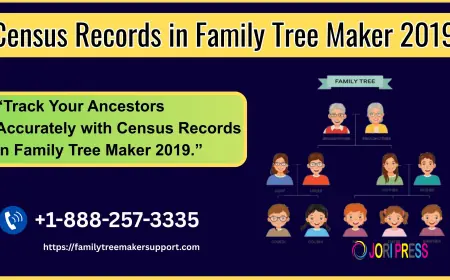Top 10 OWASP Vulnerabilities Explained: Complete Guide
Web application security has never been more critical than it is today. With cyber attacks increasing by 38% year-over-year and data breaches costing organizations an average of $4.45 million, understanding the Top 10 OWASP vulnerabilities explained becomes essential for developers, security professionals, and business leaders alike. The Open Web Application Security Project (OWASP) Foundation provides the industry's most trusted framework for identifying and mitigating web application security risks, serving as the gold standard for application security worldwide.
Understanding OWASP: The Foundation of Web Security
The Open Web Application Security Project represents a global community dedicated to improving software security. Since its inception, OWASP has become the definitive authority on web application vulnerabilities, providing free resources, tools, and methodologies that organizations worldwide rely on to secure their digital assets.
The OWASP Top 10 list gets updated every three to four years based on comprehensive data analysis from security firms, bug bounty platforms, and vulnerability databases. This collaborative approach ensures the list reflects the most current and prevalent security threats facing web applications today.
The Complete OWASP Top 10 Vulnerabilities Breakdown
1. Broken Access Control
Broken Access Control sits at the top of the OWASP list for good reason. This vulnerability occurs when applications fail to properly restrict what authenticated users can access or perform. Unlike authorization failures of the past, modern access control issues often stem from complex microservices architectures and inadequate permission validation.
Common manifestations include:
-
Users accessing resources they shouldn't have permission to view
-
Privilege escalation attacks where standard users gain administrative rights
-
Directory traversal attacks allowing access to sensitive file systems
-
Missing function-level access controls in APIs
Real-world impact: A major healthcare provider recently suffered a breach affecting 3.3 million patients when attackers exploited broken access controls to access patient records through an unprotected API endpoint.
2. Cryptographic Failures (Formerly Sensitive Data Exposure)
Cryptographic failures represent one of the most technically complex categories in our Top 10 OWASP vulnerabilities explained guide. This vulnerability encompasses weak encryption implementations, improper key management, and inadequate protection of sensitive data both in transit and at rest.
Testing web app vulnerabilities OWASP is essential because modern applications handle vast amounts of sensitive information, from personal identification numbers to payment card data. When cryptographic implementations fail, the consequences extend far beyond simple data exposure.
Critical focus areas:
-
Implementation of strong encryption algorithms (AES-256, RSA-4096)
-
Proper key rotation and management procedures
-
Secure transmission protocols (TLS 1.3)
-
Database encryption for sensitive stored data
3. Injection Vulnerabilities
Despite being a well-known threat, injection attacks continue plaguing web applications. SQL injection alone accounts for nearly 65% of all web application attacks, making this category particularly dangerous for organizations that haven't implemented proper input validation and parameterized queries.
Types of injection attacks:
-
SQL Injection: Manipulating database queries through malicious input
-
NoSQL Injection: Targeting modern database systems like MongoDB
-
LDAP Injection: Exploiting directory service queries
-
Command Injection: Executing arbitrary system commands
4. Insecure Design
Insecure Design represents a fundamental shift in how we approach application security. Unlike implementation flaws that can be patched, insecure design issues require architectural changes and represent missing or ineffective security controls from the planning phase.
This category emphasizes the importance of threat modeling, secure design patterns, and security-by-design principles. Applications suffering from insecure design lack proper security controls even when implemented correctly.
Design security principles:
-
Defense in depth strategies
-
Fail-safe defaults implementation
-
Least privilege access models
-
Complete mediation for all access requests
5. Security Misconfiguration
Security misconfigurations affect over 90% of applications in some form, making this one of the most prevalent vulnerabilities in our Top 10 OWASP vulnerabilities explained analysis. These issues often result from default settings, incomplete configurations, or ad-hoc configuration changes made without security consideration.
Common misconfiguration examples:
-
Default accounts with unchanged passwords
-
Excessive error messages revealing system information
-
Outdated software components with known vulnerabilities
-
Unnecessary features or services running on production systems
6. Vulnerable and Outdated Components
Modern applications rely heavily on third-party libraries, frameworks, and components. The average web application contains over 200 third-party components, creating a massive attack surface that many organizations struggle to manage effectively.
Component security challenges:
-
Tracking dependencies across complex application stacks
-
Monitoring for newly disclosed vulnerabilities
-
Testing updates for compatibility issues
-
Managing transitive dependencies (dependencies of dependencies)
7. Identification and Authentication Failures
Authentication mechanisms form the first line of defense for web applications, yet implementation flaws in this area remain surprisingly common. These vulnerabilities allow attackers to compromise passwords, keys, session tokens, or exploit other authentication weaknesses.
Authentication security considerations:
-
Multi-factor authentication implementation
-
Secure session management practices
-
Password policy enforcement
-
Account lockout and monitoring mechanisms
8. Software and Data Integrity Failures
This relatively new category addresses risks related to software updates, critical data, and CI/CD pipelines without integrity verification. According to the OWASP security testing checklist, applications that depend on plugins, libraries, or modules from untrusted sources face significant risks if they don't verify integrity.
Integrity protection measures:
-
Digital signature verification for software updates
-
Secure CI/CD pipeline configuration
-
Supply chain security implementation
-
Code signing and verification processes
9. Security Logging and Monitoring Failures
Inadequate logging and monitoring capabilities prevent organizations from detecting, escalating, and responding to security incidents effectively. Without proper visibility, breaches can go undetected for months, significantly increasing the potential damage.
Essential monitoring components:
-
Comprehensive audit log generation
-
Real-time security event monitoring
-
Incident response automation
-
Log integrity protection mechanisms
10. Server-Side Request Forgery (SSRF)
SSRF vulnerabilities occur when web applications fetch remote resources without validating user-supplied URLs. Attackers can exploit these flaws to access internal systems, perform port scanning, or retrieve sensitive information from cloud metadata services.
SSRF attack vectors:
-
Internal network reconnaissance
-
Cloud metadata service exploitation
-
Local file system access
-
Internal service enumeration
Advanced Mitigation Strategies
Implementing Security by Design
Security cannot be an afterthought in modern application development. Organizations must integrate security considerations throughout the development lifecycle, from initial planning through deployment and maintenance.
Key implementation strategies:
-
Threat modeling during design phases
-
Security requirements integration
-
Regular security code reviews
-
Automated security testing in CI/CD pipelines
Building a Comprehensive Security Program
Addressing the Top 10 OWASP vulnerabilities explained in this guide requires more than technical fixes. Organizations need comprehensive security programs that combine technology, processes, and people to create robust defense mechanisms.
Program components include:
-
Regular vulnerability assessments and penetration testing
-
Developer security training programs
-
Incident response planning and testing
-
Third-party security assessments
-
Continuous security monitoring implementation
Industry-Specific Considerations
Healthcare Applications
Healthcare applications face unique challenges due to HIPAA compliance requirements and the sensitivity of patient data. These applications must implement additional controls beyond the standard OWASP recommendations.
Financial Services
Financial applications require adherence to PCI DSS standards and additional fraud prevention measures. The regulatory landscape adds complexity to security implementation while increasing the stakes for security failures.
E-commerce Platforms
Online retail platforms must balance security with user experience while protecting customer payment information and personal data. Performance considerations often conflict with security requirements, requiring careful optimization.
Emerging Threats and Future Considerations
The security landscape continues evolving rapidly, with new attack vectors emerging as applications become more complex and interconnected. As an Application Security Master, staying ahead of trends such as container security, serverless application protection, and API security is crucial, as these growing areas of concern may influence future OWASP Top 10 updates.
Emerging security challenges:
-
Containerized application security
-
Serverless function protection
-
GraphQL security implementation
-
Machine learning model security
Building Security Culture
Technology alone cannot solve security challenges. Organizations must foster security-aware cultures where developers, operations teams, and business stakeholders understand their roles in maintaining application security.
Cultural transformation elements:
-
Leadership commitment to security investment
-
Regular security awareness training
-
Cross-functional security collaboration
-
Security metrics and accountability
Implementation Roadmap
Phase 1: Assessment and Planning (Months 1-2)
-
Conduct comprehensive security assessments
-
Identify current vulnerability exposure
-
Develop remediation priorities
-
Allocate resources and establish timelines
Phase 2: Critical Vulnerability Remediation (Months 3-6)
-
Address high-severity vulnerabilities first
-
Implement basic security controls
-
Establish security testing procedures
-
Begin security training programs
Phase 3: Comprehensive Security Enhancement (Months 6-12)
-
Deploy advanced security monitoring
-
Implement secure development practices
-
Establish incident response capabilities
-
Conduct regular security reviews
Phase 4: Continuous Improvement (Ongoing)
-
Regular security assessments
-
Threat landscape monitoring
-
Security program optimization
-
Emerging technology evaluation
Conclusion
Understanding and addressing the Top 10 OWASP vulnerabilities explained in this comprehensive guide represents just the beginning of a robust application security program. These vulnerabilities continue evolving as attack techniques become more sophisticated and applications grow more complex.
Success requires combining technical expertise with organizational commitment, proper tooling with human insight, and reactive measures with proactive security design. Testing OWASP Top 10 for developers should be a core part of this strategy, ensuring that the most common and dangerous vulnerabilities are addressed effectively. Organizations that take a comprehensive approach to addressing these vulnerabilities will be better positioned to protect their assets, maintain customer trust, and comply with regulatory requirements.
The investment in application security pays dividends through reduced breach risk, lower compliance costs, improved customer confidence, and enhanced business reputation. As the digital landscape continues evolving, organizations that prioritize security will maintain competitive advantages while those that neglect it face increasing risks and costs.
Remember that security is not a destination but a continuous journey requiring ongoing attention, investment, and adaptation to emerging threats and changing business requirements.
Frequently Asked Questions
1. How often should organizations assess their applications against the OWASP Top 10?
Organizations should conduct OWASP Top 10 assessments at least annually, with additional assessments after major application updates or architecture changes. High-risk applications may require quarterly assessments, while continuous monitoring provides ongoing visibility into security posture.
2. Can automated tools alone identify all OWASP Top 10 vulnerabilities?
While automated tools excel at detecting certain vulnerability types like injection flaws and known component vulnerabilities, they struggle with complex issues like insecure design and business logic flaws. A comprehensive approach combining automated scanning, manual testing, and code review provides the best coverage.
3. What's the difference between OWASP Top 10 for Web Applications and OWASP Top 10 for APIs?
The Web Application Top 10 focuses on traditional web application vulnerabilities, while the API Top 10 addresses specific risks in modern API implementations. APIs face unique challenges like excessive data exposure and lack of resources and rate limiting that require specialized attention.
4. How do cloud environments affect OWASP Top 10 vulnerability management?
Cloud environments introduce shared responsibility models where security controls are distributed between cloud providers and customers. Organizations must understand their responsibilities and implement appropriate controls for their portion of the stack while leveraging cloud-native security services.
5. What role does DevSecOps play in addressing OWASP Top 10 vulnerabilities?
DevSecOps integrates security practices throughout the development lifecycle, enabling early detection and remediation of OWASP Top 10 vulnerabilities. This approach reduces remediation costs and improves overall security posture by making security everyone's responsibility rather than a separate team's concern.
What's Your Reaction?
 Like
0
Like
0
 Dislike
0
Dislike
0
 Love
0
Love
0
 Funny
0
Funny
0
 Angry
0
Angry
0
 Sad
0
Sad
0
 Wow
0
Wow
0


















































